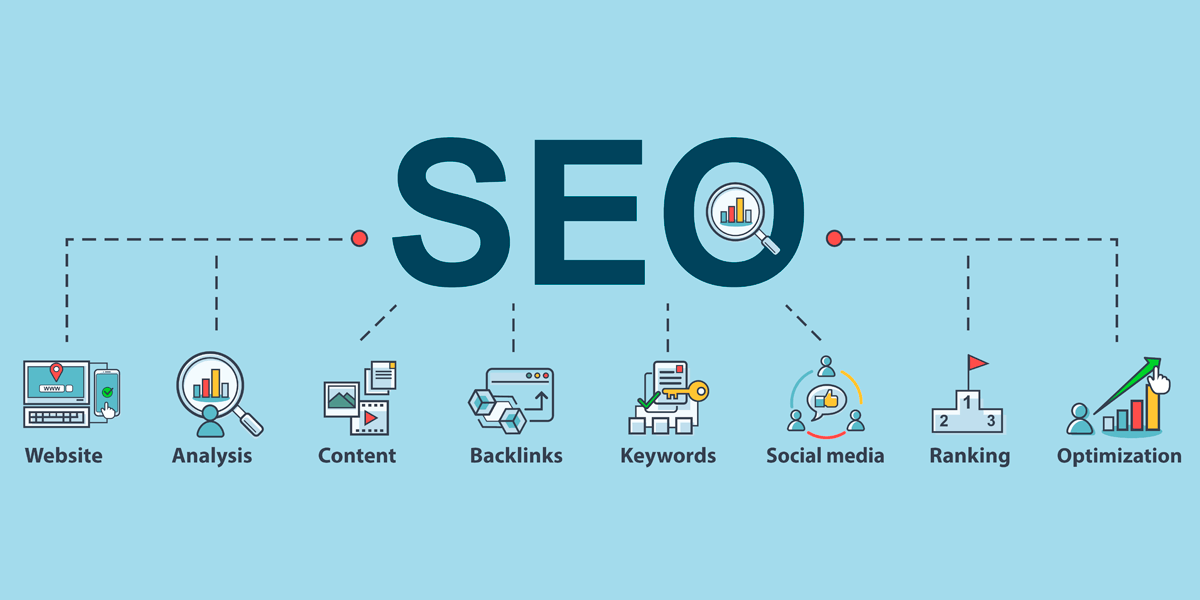Comprehending the Role of User Experience in Modern Search Engine Optimization Practices
In a period where electronic existence can make or break an organization, recognizing the crossway in between individual experience (UX) and modern-day SEO techniques is much more crucial than ever before. As online search engine evolve, they progressively prioritize internet sites that provide seamless, interesting experiences to customers. Elements such as website rate, mobile-friendliness, and user-friendly navigating are no longer simple improvements; they are critical to search engine optimization success. Yet, how do these aspects precisely influence search positions? And how can services guarantee their digital material not just fulfills yet exceeds progressing expectations? These questions develop the foundation of an essential conversation.
The Development of SEO
Throughout the years, the landscape of search engine optimization (SEARCH ENGINE OPTIMIZATION) has actually gone through considerable change, reflecting the dynamic nature of digital innovation and individual habits. At first, search engine optimization was mostly regarding keyword stuffing and link-building techniques, focusing heavily on adjusting search engine formulas to boost web site rankings. Nevertheless, as online search engine ended up being much more sophisticated, these strategies began to lose effectiveness and relevance.

Furthermore, mobile optimization and voice search have become integral parts of SEO approaches. With the proliferation of smart devices, guaranteeing internet sites are mobile-friendly has come to be a requirement. Voice search, driven by digital assistants like Siri and Alexa, has actually further moved search engine optimization methods towards natural language handling and conversational content.
Fundamentally, the evolution of SEO mirrors a wider trend towards boosting customer fulfillment by aligning digital material with the nuanced assumptions of modern users.
Trick UX Elements in SEO
In the world of search engine optimization, crucial individual experience (UX) elements are essential for enhancing both user satisfaction and search engine positions. Sites optimized for mobile use not just promote a seamless customer experience however likewise align with Google's mobile-first indexing approach.
Clear call-to-action (CTA) switches lead customers towards desired actions, enhancing conversion rates. Availability can not be forgotten; ensuring that content is accessible to users with impairments expands reach and complies with web requirements. Integrating these UX aspects effectively supports SEO efforts by advertising user retention and assisting in search engine understanding of site material.
Impact of Site Rate
While commonly ignored, the influence of website speed on customer experience and Search engine optimization can not be overstated. A slow-loading internet site can lead to enhanced bounce prices, as individuals are likely to abandon a website if it takes more than a few seconds to tons.
Furthermore, website speed directly influences conversion prices and individual satisfaction. By resolving these technical aspects, websites can boost their rate, therefore enhancing user experience and enhancing their Search engine optimization performance. Inevitably, investing in site rate is investing in both consumer complete satisfaction and search engine presence, vital elements in the electronic industry.
Mobile-Friendliness Significance
Adjusting to mobile-friendliness has actually become an essential component of efficient SEO methods. As mobile gadgets significantly control web use, search engines like Google have moved towards mobile-first indexing, implying the mobile version of a website is focused on in useful source ranking algorithms (seo adelaide). Mobile-friendliness is not simply a trend yet a requirement in optimizing a website's online search engine performance

As customers frequently browse for local details on-the-go, having a mobile-optimized site improves presence in neighborhood search outcomes, driving foot web traffic and conversions for companies. Sites that fall short to prioritize mobile-friendliness danger losing out on beneficial web traffic, as customers are less most likely to involve with websites that are difficult to browse on their mobile tools.
Enhancing Navigating for SEO
As organizations acknowledge the need of mobile-friendliness in SEO, one more essential facet emerges: enhancing navigation - seo adelaide. Reliable navigation is important as it straight influences customer experience (UX), which internet search engine significantly prioritize. A well-structured website makes certain that customers can quickly locate the content they are looking for, minimizing bounce prices and enhancing dwell time, both of which are essential SEO metrics
To improve navigating, websites must read the full info here take on a logical power structure that overviews individuals seamlessly through material. This includes clear, succinct food selection tags and an intuitive design, which jointly simplify the individual trip. Using breadcrumb routes can even more assist individuals in comprehending their place within a website, fostering a feeling of alignment and control.
Ensuring navigating is responsive throughout gadgets assurances that customers take index pleasure in a regular experience, vital in today's multi-device world. Inevitably, improving navigating is not just about aesthetics; it is a strategic method to enhancing both customer involvement and search engine performance.
Conclusion
Integrating individual experience into contemporary Search engine optimization methods is critical for enhancing search engine rankings and enhancing internet site performance. As search engines prioritize customer intent, important components such as website speed, mobile-friendliness, and instinctive navigating play an essential function in meeting customer assumptions.
In the realm of search engine optimization, crucial user experience (UX) components are crucial for enhancing both individual fulfillment and search engine positions. Incorporating these UX elements properly supports SEO initiatives by advertising user retention and facilitating search engine understanding of website web content.
As users often search for regional info on-the-go, having a mobile-optimized site improves presence in regional search results, driving foot website traffic and conversions for services.Incorporating customer experience into modern-day SEO methods is extremely important for optimizing search engine positions and boosting site efficiency. As search engines focus on customer intent, crucial components such as website speed, mobile-friendliness, and user-friendly navigating play a vital role in conference customer expectations.